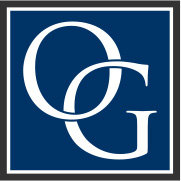A brief recent history of patenting software in the United States goes something like this: before 1998 it was possible, but the internet was just coming to its own so there were not many software patents; then in 1998 the State Street decision was handed down. The State Street decision essentially said that patents that claimed inventions for methods and processes traditionally accomplished using manual techniques but now accomplished using a computer process or method such as spreadsheets, financial calculations etc could be valid – that is, they were at least within patent subject matter and not merely laws of nature. In the ensuing years before the run up to the turn of the century “everything under the sun” in software and internet technology was sought to be patented, and hundreds of thousands of “software” patents were issued. The crash of 2000 wiped out a lot of marginal internet businesses, however software patenting continued in earnest under State Street. Thanks in part to the combination of the huge number of software patents issued and the bankruptcy of a lot of companies after the financial crashes of 2000 and 2007, a new industry was born – the so called “patent troll” or in our parlance, non practicing entity (NPE) or patent assertion entity (PAE). Whatever you call it, the business model is to sue companies that use what most of us consider to be “basic building blocks” technology in those patents. Economically patent suits are staggeringly expensive so many companies, including many of our clients, opted to pay -or colloquially – feed the troll – it just made more economic sense. However, slowly bigger companies started fighting back. What was born from that unholy (or holy, depending on your view) war was a series of Supreme Court cases, starting with In Re Bilski, and finishing on the Alice Corp decision.
Alice Corp literally laid waste to nearly every software/internet patent in its path. Alice Corp’s impact can be seen in the somewhat dramatic reduction of patent filings since it issued (see 2015 Patent Litigation Study) – some people have just given up trying… Recently, however, a Federal Circuit decision has given some hope in overcoming Alice Corp.
In Enfish v Microsoft the Federal Circuit found that certain database technology process described in the patent was not abstract – that is, that the invention overcame the first prong of the 2 part Alice Corp test. Under Alice Corp and the previous decision in Mayo Collaborative Services v. Prometheus Laboratories, Inc. “First, we determine whether the claims at issue are directed to one of those patent-ineligible concepts. [] If so, we then ask, “[w]hat else is there in the claims before us?” [] To answer that question, we consider the elements of each claim both individually and “as an ordered combination” to determine whether the additional elements “transform the nature of the claim” into a patent-eligible application.” The first prong of the test is known as the “abstract idea” prong, meant to embody “the longstanding rule that ‘[a]n idea of itself is not patentable.” So, for example “an algorithm for converting binary-coded decimal numerals into pure binary form” was merely abstract because it sought to “in practical effect . . . [] patent [] the algorithm itself.” Likewise, “a method for hedging against the financial risk of price fluctuations” was unpatentable because “”the basic concept of hedging, or protecting against risk. [is] a fundamental economic practice long prevalent in our system of commerce and taught in any introductory finance class.’” The addition of the computer did not transform the idea of hedging into anything inventive. Most cases that find prong 1 of the test go on to find that whatever the system or process that is claimed in the patent is, it is not sufficiently transformative to overcome the 2nd prong.
In Enfish, the Federal Circuit held that the database technology described in the claim was not abstract. The specific technology deals with a better method of handling related database data. In a traditional relational database, an information source is stored in one table, another information source is stored in another table, and the relationship between those tables is either defined in columns on each table, or held in a third “pivot” table that defines the foreign table keys that link the tables together. The invention in Enfish involved placing all of the related data in ONE table, and defining the relationships in table columns in that same table. The effect of doing that was to make the process of retrieving related data faster and more efficient, among other benefits. This invention thus directly impacted computer process efficiency – in this case, database efficiency. The Federal Circuit held that “the first step in the Alice inquiry in this case asks whether the focus of the claims is on the specific asserted improvement in computer capabilities (i.e., the self-referential table for a computer database) or, instead, on a process that qualifies as an “abstract idea” for which computers are invoked merely as a tool. . . [a]ccordingly, we find that the claims at issue in this appeal are not directed to an abstract idea within the meaning of Alice. Rather, they are directed to a specific improvement to the way computers operate, embodied in the self-referential table.”
The patent lawyers at Oliver & Grimsley have overcome Alice Corp rejections in several instances, and have learned to navigate the intricacies of obtaining patent protection over computer based technology. In a series of future articles we will go over some of the issued patents we have been counsel on and some of the issues that come up during prosecution of software and computer based patents.
